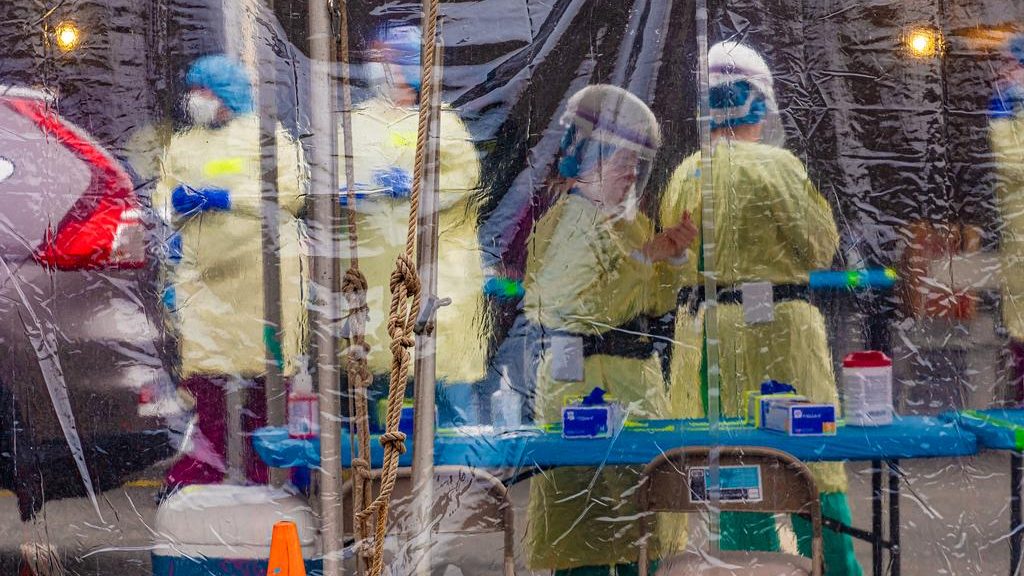Article published in the Philadelphia Business Journal on April 20, 2020
We are living in extraordinary times. The U.S. and other countries around the world have been attacked by the COVID-19 pandemic. As we defend against this virus, what we are learning will help better prepare us for the next time we experience a public health crisis, the consequences of which may be much worse than COVID-19.
So, what are the lessons to be learned from the COVID-19 pandemic?
1. Public health defense is just as important as military defense.
In preparation for the day we need to battle a military adversary, a day we hope never comes, we spare no expense to ensure our soldiers have the equipment and ammunition needed to defeat the enemy. To date, this has not been the case with a public health adversary. No military opponent has ever disrupted society and the economy as has COVID-19.
We need to be as prepared to fight a public health battle as we are to fight a military battle. Public health defense has been de-emphasized, while spending on military defense has risen significantly. Our country’s priorities need to be realigned.
2. The right type of leader is needed to lead the defense against a viral attack.
A leader with broad experience and a track record of success leading complex organizations must be designated to lead the next defense against attack by a virus. Unlike the military’s command and control hierarchy, this individual must possess a high level of collaborative skills to effectively work with people outside their organization – the president, state governors, the Centers for Disease Control and Prevention and other government agencies overseeing public health.
What are key traits that this leader must possess? They need great communication skills and the ability to engender trust. They need to recognize that their credibility with the people of the U.S. is crucial to their success.
3. Decision-making at the national and state levels must be coordinated.
State and federal governments have been bidding against each other for limited numbers of masks and other personal protective equipment, driving up the price of these critical items. Coordinated plans must be put in place before the next pandemic so this does not occur.
An April 13 article in the Wall Street Journal reports that Veterans Affairs hospitals are running short of face masks. Decisions may need to be made as to who will get the masks and who won’t. I can’t imagine this occurring during a military conflict. In addition to ventilators, we need enough stockpiles of gloves, masks and gowns to protect the doctors, nurses and first responders on the front line. We need a process to distribute these items when and where they are needed. We need to ensure that hospital surge capacity can be rapidly set up to treat patients.
4. A virus is more dangerous than a military opponent.
The medical staff treating wounded soldiers have a low chance of becoming a casualty, compared to a doctor or nurse who can be infected by COVID-19 while treating a patient. If they become infected, they and those they were in contact with are then quarantined, resulting in the loss of their services for 14 days.
Our front-line medical professionals run the risk of taking the virus home and infecting their families. Or worse, they can become fatalities in this war against COVID-19. These brave and dedicated individuals deserve our praise and gratitude.
5. A tough decision is on the horizon.
Eventually, the rate of COVID-19 infections will abate, and a decision will need to be made on when to reopen businesses, get people back to work and students back in school. If done too soon, the rate of infection will rise again. The longer the delay, however, the more economic damage there will be. Hopefully, a vaccine will be developed soon.
Ultimately, people will need to feel confident that they will be safe before anything approaching normalcy occurs. This may require readily available COVID-19 testing, even home test kits that provide instant results, for people to relax their social distancing practices. People may need to be periodically retested to ensure they were not recently exposed to the virus. This intensive testing capability is not yet available.
Leaders are often called upon to choose among courses of action. Often, they must “thread the needle” to arrive at a decision that might be far from ideal, but better than the alternatives. Let’s hope that our state governors have the wisdom to weigh the opinions of the medical experts and make the right decision on when to lift their shelter-in-place orders so that we don’t see the rate of COVID-19 infection rise after a decline.
Stan Silverman is founder and CEO of Silverman Leadership and author of “Be Different! The Key to Business and Career Success.” He is also a speaker, advisor and widely read nationally syndicated columnist on leadership, entrepreneurship and corporate governance. He can be reached at Stan@SilvermanLeadership.com.

